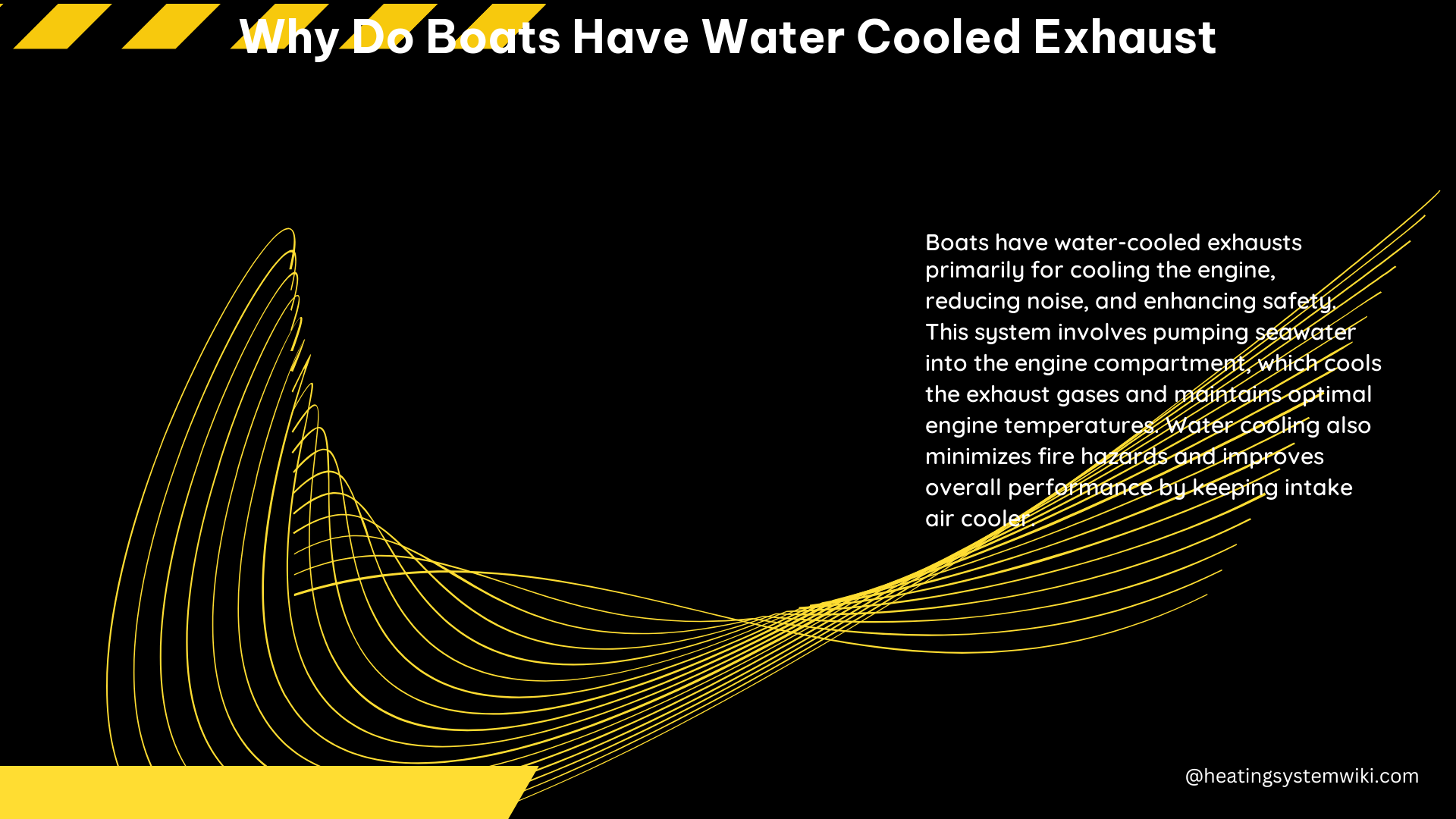Boats have water-cooled exhaust systems to manage the high temperatures generated by the engine’s combustion process and to reduce noise. These systems use seawater to absorb heat from the exhaust gases, keeping the engine room cooler and reducing noise levels.
Understanding the Need for Water Cooling in Boat Engines
Boat engines, especially those with high-performance or large-displacement motors, generate significant amounts of heat during the combustion process. This heat can build up in the confined spaces of a boat’s engine compartment, leading to several issues:
- Overheating: Without proper cooling, the engine and its components can overheat, leading to reduced performance, increased wear and tear, and even catastrophic failure.
- Thermal Expansion: The high temperatures can cause thermal expansion of engine parts, leading to increased friction, wear, and potential seizure.
- Fire Hazard: Uncooled exhaust systems can become extremely hot, posing a fire risk, especially in the presence of flammable materials or liquids.
- Noise Pollution: The high-temperature exhaust gases can create significant noise, which can be disruptive to the crew and passengers.
How Water-Cooled Exhaust Systems Work

Water-cooled exhaust systems use seawater to absorb heat from the engine’s exhaust gases, effectively cooling the entire system. The process typically involves the following components:
- Heat Exchanger: Located in the engine’s exhaust manifold, the heat exchanger transfers heat from the exhaust gases to the seawater.
- Cooling System: A dedicated cooling system, including a pump, thermostat, and radiator, circulates the heated seawater and expels it overboard, dissipating the excess heat.
- Mixing Elbow: In some cases, a mixing elbow is used to combine the exhaust gases with the cooling water before it is expelled, further reducing the temperature of the exhaust.
The key benefits of this system include:
- Temperature Management: The water cooling effectively reduces the temperature of the exhaust system, preventing overheating and thermal expansion issues.
- Noise Reduction: The cooling water absorbs and dissipates the heat, reducing the noise generated by the high-temperature exhaust gases.
- Corrosion Prevention: The water cooling prevents the exhaust gases from coming into direct contact with the engine and other metal components, reducing the risk of corrosion.
- Improved Safety: By reducing the temperature of the exhaust system, the risk of fire is minimized, enhancing the overall safety of the boat.
Technical Specifications and Considerations
When designing or installing a water-cooled exhaust system, there are several technical specifications and considerations to keep in mind:
- Heat Exchanger Size: The heat exchanger must be sized appropriately to handle the heat output of the engine. Factors such as engine displacement, horsepower, and RPM will determine the required heat exchanger capacity.
- Cooling System Capacity: The cooling system, including the pump, thermostat, and radiator, must be able to effectively dissipate the heat absorbed by the seawater. Factors such as boat size, engine power, and ambient water temperature will influence the required cooling system capacity.
- Exhaust Piping: The exhaust piping must be designed to accommodate the water-cooled system, with proper insulation and routing to prevent heat buildup and potential fire hazards.
- Seawater Intake: The seawater intake must be positioned to ensure a reliable and consistent supply of cooling water, taking into account factors such as boat speed, wave action, and debris.
- Maintenance and Inspection: Regular maintenance and inspection of the water-cooled exhaust system are crucial to ensure its continued safe and efficient operation. This may include cleaning the heat exchanger, checking for leaks, and monitoring the cooling system’s performance.
DIY Installation Considerations
While it is possible to install a water-cooled exhaust system as a DIY project, it is generally recommended to consult with a professional marine mechanic or engineer. The installation process can be complex and requires specialized knowledge and tools, including:
- Heat Exchanger Placement: Determining the optimal location and mounting of the heat exchanger within the engine compartment.
- Cooling System Integration: Integrating the water-cooled exhaust system with the boat’s existing cooling system, ensuring proper flow and temperature regulation.
- Exhaust Piping Fabrication: Fabricating the exhaust piping to route the exhaust gases and cooling water effectively, while maintaining proper insulation and support.
- Seawater Intake and Discharge: Properly installing the seawater intake and discharge components to ensure a reliable and efficient cooling system.
- Testing and Commissioning: Thoroughly testing the installed system to ensure proper operation, identify any potential issues, and make necessary adjustments.
By understanding the technical details and considerations involved in water-cooled exhaust systems, boat owners and DIY enthusiasts can make informed decisions about the installation and maintenance of these critical components, ensuring the safe and efficient operation of their vessels.
